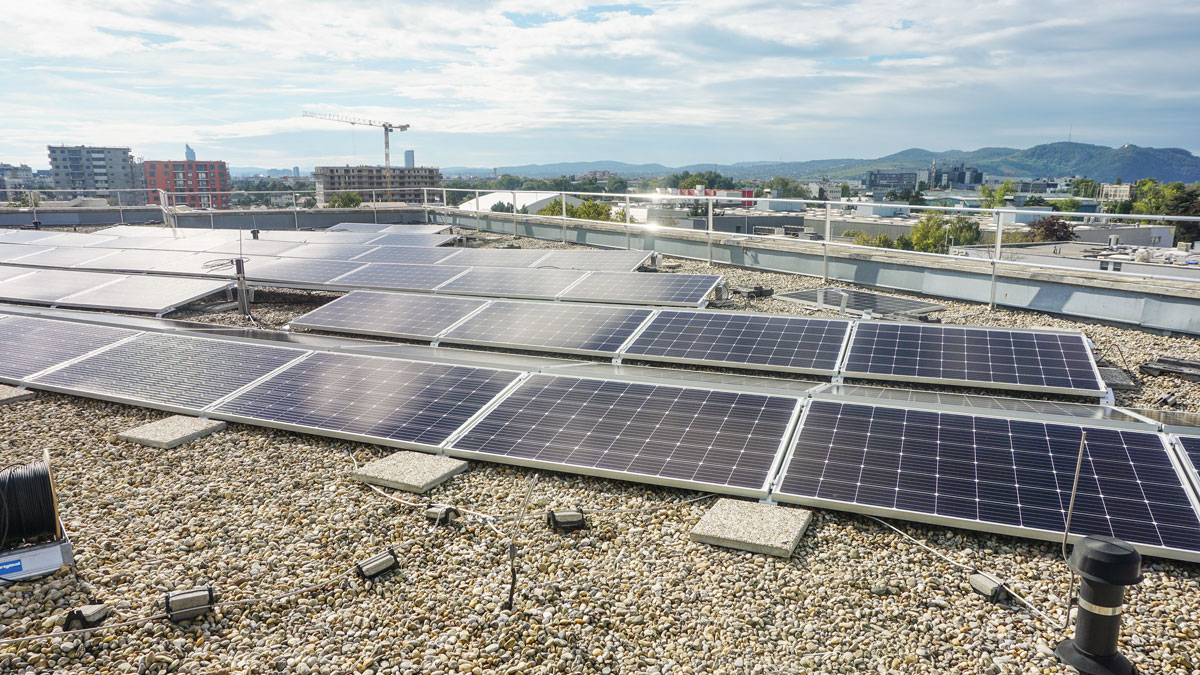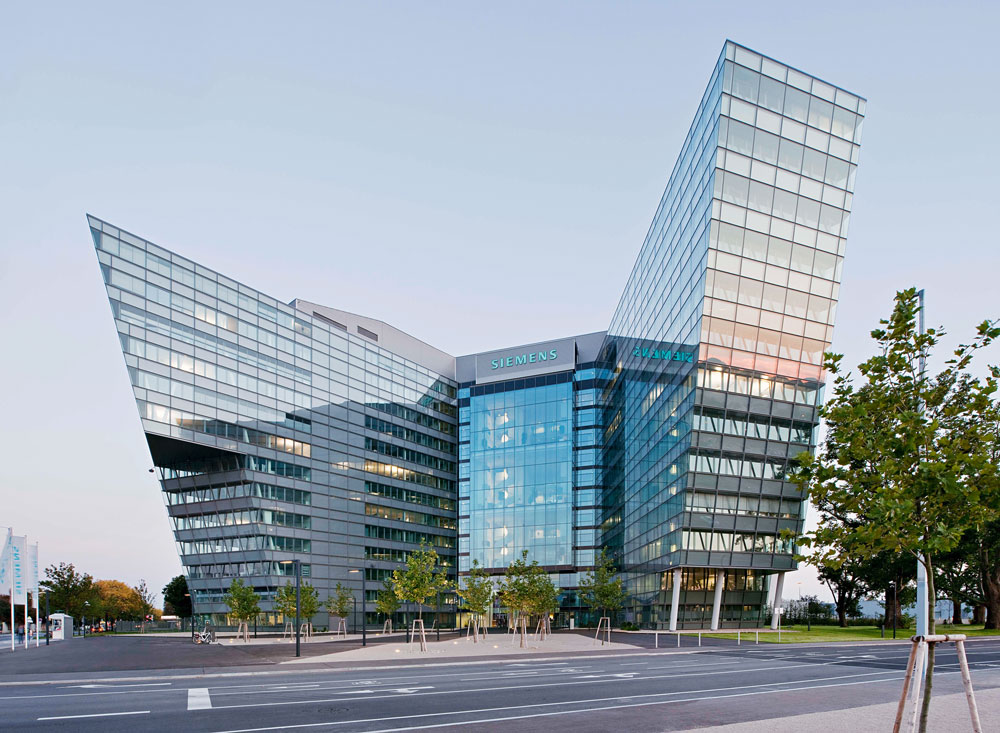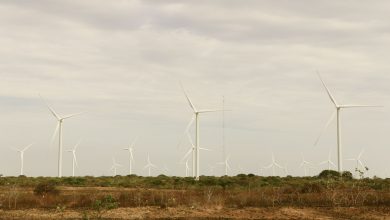Microgrid Project in Vienna: Small Grid, Major Impact
Flashback to 2010: A corporate headquarters opens in the northern part of Vienna that sets new standards in energy efficiency and sustainability. Geothermal energy is also used to heat the building, and the building complex contains a heating and cooling storage system. The heat exchangers in the building services unit enable up to 75 percent of the heat to be recovered from the energy in exhaust air – and those are just some of the innovative features. The efforts by the owner, Siemens Real Estate (SRE), to ensure that the construction process and the building itself were as environmentally friendly as possible were recognized by the award of the gold LEED certificate, in addition to the EU Green Building Certificate.
“This new project points the way to the future of smart energy management solutions.”
Franz Mundigler, Head of Central and Eastern Europe for Siemens Real Estate
Nine years later, a project is being initiated at the Siemens City site, once again with SRE as the innovative developer, and again with a number of unique selling points. “Just as the new main building on the corporate campus represented the future of sustainability and energy efficiency for non-residential buildings at the time, this new project points the way to the future of smart energy management solutions,” states Franz Mundigler, Head of Central and Eastern Europe (CEE) for SRE.
Microgrid controller at the heart
The project is the Siemens Campus Microgrid, which is currently taking shape at the campus of Siemens Austria in Vienna following a successful business-case analysis. The first elements of what will – in summer of 2020 – become a smart system to optimize energy management and heating requirements on the company premises have been under construction since the fall of 2019. “A smart microgrid controller centrally orchestrates the connected assets and optimizes the power supply to take account of peak loads and grid capacity utilization. That’s in addition to other influencing factors that result from independent generation,” says Werner Brandauer, Digital Grid, Siemens Smart Infrastructure, who has researched microgrids in the U.S. and played a key role in planning the project. The microgrid also incorporates the Siemens Desigo building management system, which can adjust the heating supply in the main building during peak load periods: for example, to optimize the power that the overall complex draws from the grid.
The measured data is gathered in the Siemens IoT platform and provides a valuable resource for optimizing consumption management using data analytics solutions. The project is unique due to its connection to the infrastructure of an existing industrial firm and the combination of PV, battery storage, microgrid controller, load control, and optimized charging solutions for electromobility, and it offers many opportunities for innovative research. “We’d like this project to be part of international research activities and help us make refinements in specific areas,” explains Andreas Lugmaier, Head of the Smart Embedded Systems research unit at Siemens Corporate Technology Austria.
Components in the Siemens Campus Microgrid
- Photovoltaic panels totalling 1,600 m² and 312 kWp
- Battery storage output: 500 kWh, capacity: 500 kW
- eMobility charging stations from Siemens
- Desigo building management system from Siemens
- Microgrid controller from Siemens
- Fire safety: Extinguishing system Sinorix from Siemens
- Additional features: Pre5G Campus Network and circular economy project
Optimizing carbon footprint and energy balance
But what’s the motivation to optimize the operation of one’s own grid sectors, and what are the potential benefits? “The demand for electricity is going to continue increasing, driven mainly by integrated energy systems, including both electromobility and heating supplies,” says Gerd Pollhammer, Head of Siemens Smart Infrastructure Austria and CEE. “Combined with the increasing decentralization of power generation and availability-driven fluctuations in supply, this will pose greater and greater challenges to our ability to ensure a safe and reliable supply of electricity. There’s also the increasingly urgent need for businesses to optimize their carbon footprint and energy balance.” Microgrid solutions are one answer to these challenges, because the combination of independent power generators like photovoltaics and optimized power consumption helps prevent the supply bottlenecks and peak loads that burden the supply network.
Facilitating electromobility without further grid expansion
Decentralizing the energy system also makes the electricity network more and more flexible. Managing and marketing the flexibility created by smart optimization solutions will become more and more appealing to both the industrial sector and campuses and larger commercial enterprises. The opportunity to reduce power surges and adapt power requirements to costs on the spot market and make flexibility available on the balancing energy market will be a driver of this development in the future.
“The battery storage system will also play a role in the balancing energy market, where balancing reserves are traded.”
Robert Tesch, Head of Digital Grid and Distribution Systems, Siemens Austria and CEE
The Siemens Campus Microgrid project in Vienna also includes the prospect of making flexibility available on the electricity market via aggregators. One objective earlier in the project was to show how peak loads could be avoided when drawing electricity from the supply network within a campus by providing and using high-resolution measurement results. “This takes the load off the higher-level distribution network, while minimizing the power-based tariffs charged for the grid,” says Robert Tesch, Head of the Digital Grid and Distribution Systems unit for Siemens Austria and CEE. “The battery storage system will also play a role in the balancing energy market, where balancing reserves are traded.”

This showcase from Siemens Austria also illustrates how a microgrid can help integrate electromobility in the existing local distribution grid without having to expand the grid. Smart components that provide load control are what make this possible. “Otherwise, installing extra electric charging points would lead directly to higher grid tariffs or power-based tariffs, which a smart control system can help avoid,” Brandauer explains. This involves taking readings from and controlling the majority of the charging points to enable information to be gathered and evaluated on both vehicle charging performance and user behaviour.
Future-oriented charging management
As electromobility becomes more established, these options will be more attractive to industrial companies with staff parking lots, parking structures, park-and-ride facilities, or perhaps to shopping malls and large residential complexes. Using an electricity storage system in conjunction with a microgrid controller to manage peak loads will make it possible to develop future-oriented solutions for managing parking lots and charging electric vehicles while factoring in consumption patterns.
The charging infrastructure built from Siemens products includes a demonstration of smart charging for electric vehicles: The vehicle’s charging capacity can be influenced during the charging process, and in conjunction with the microgrid controller, it can be accessed to optimize peak loads for the entire grid. The electromobility charging infrastructure also features a modular busbar solution (TOB-Charge) for use in garages. The charging infrastructure can therefore grow organically as electromobility advances.
Thanks to its many years of expertise and experience Siemens Smart Infrastructure has accumulated in the areas of building management and power grids, the Microgrid Campus created by Siemens Austria impressively demonstrates the performance and benefits of microgrid solutions, including electromobility, in real-life operation. The results of data analyses of the key components are shown on a display interface. “The photovoltaic panels currently incorporated into the project offer peak output of 312 kWp, and thanks to their conservation of about 100 metric tons of CO2 per year, they substantially reduce our company’s carbon footprint,” says Pollhammer, highlighting an important sustainability aspect.
5G technology for communications in the microgrid
In addition to the specific features of the project described above, the planned pilot installation for communication between the microgrid assets is also noteworthy. It will use a Pre5G campus network, which means that a dedicated frequency range will be available for microgrid communications. Information can therefore be safely exchanged between the controllers and the tags or charging points with a guaranteed data rate and short delays. “Working with our partners Nokia and A1, we’re showing how microgrids will leverage the benefits of 5G technology in the future and how they can be implemented with minimum overhead wiring and short transmission times,” says Brandauer.
Copyright: siemens.com/stories







